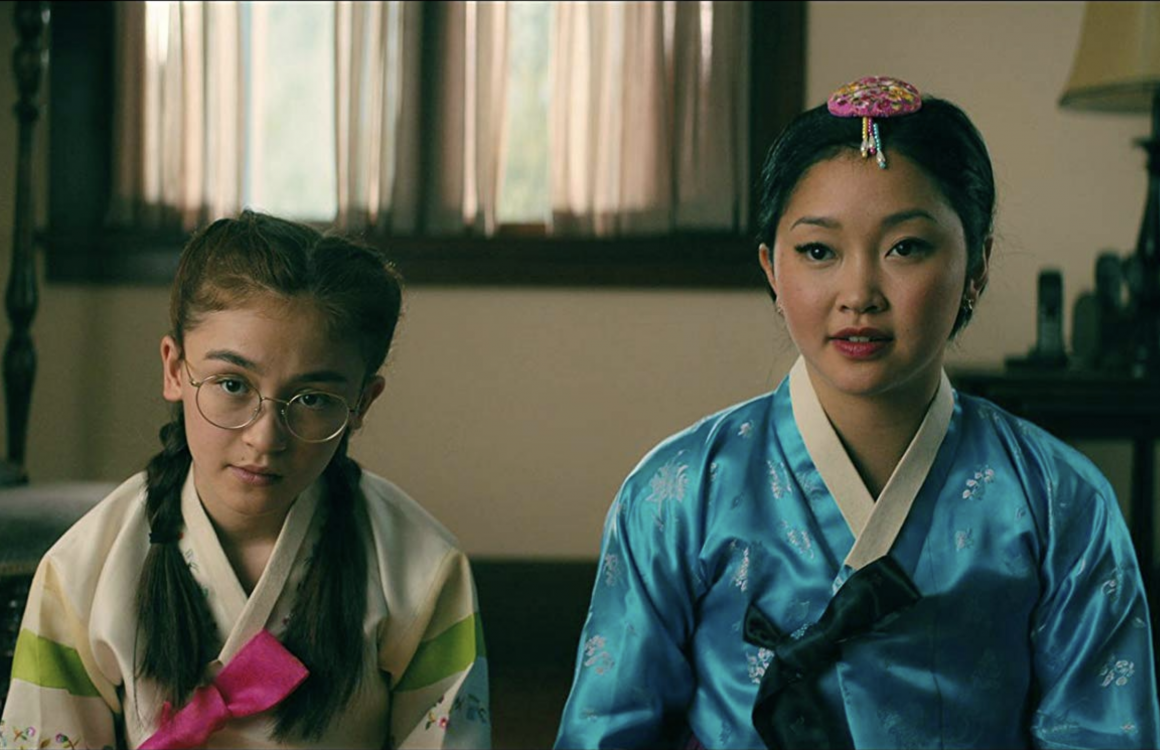
To All the Boys I’ve Loved Before 2 and cultural appropriation
By SooBean Kim, March 12 2020—
The only words I can muster up to describe the sequel to the popular Netflix movie, To All The Boys I’ve Loved Before are beautifully adorable. Seeing a movie full of wholesome themes of young honest love, friendship and family was a heartwarming delight. However, there was a feeling of unease that remained with me throughout the film like something had crawled underneath my skin — the image of Lana Condor, who plays Lara Jean Covey, and Anna Cathcart, who plays Kitty Covey, wearing traditional Korean hanboks and bowing to their elders on Korean New Year.
Although the characters from both the novel and the movie are supposed to be half-Korean, half-American, they are portrayed by actresses of other Asian races. There’s no hiding the issues with Hollywood and ethnic casting. The world has finally gotten to the point where widespread controversies regarding the white-washing of Asian roles have begun to light fires of public outrage. Movies like Crazy Rich Asians received wide praise for their all-Asian cast but is that enough? Is it okay for Hollywood to exploit ethnic ambiguity and to use different Asian races as puzzle pieces to mix and match into different roles? Yes, for the first time in many many years we have stepped closer to more accurate representation on television. But is the step big enough for us to just shut up and watch? I wish it was. I desperately wish that I could have watched the gorgeously raw and sweet film and have it be just that. But I feel fake. Something about seeing a fully Vietnamese actress wearing a hanbok tied my stomach in knots.
The hanbok is part of my culture. My first time in a hanbok dress was when I was celebrating my first birthday, which is a grand Korean tradition. The celebration includes a ceremony called Doljabi that is performed for future prosperity. My first memory wearing one was when I was 11. I remember the feel of the soft satin at my fingertips and how the vibrant colours just danced out at me. It made me feel like a princess. As a Korean-Canadian, I had spent most of my life in Canada speaking English and only speaking Korean at the dinner table. In Canada, I was never seen as Canadian.
Questions like, “Where are you really from?” were asked when I would say I was Canadian. But in Korea, my relatives never accepted me as Korean. To them, I was white-washed. I was just a child when I had my first existential identity crisis. But the first time I remember wearing a hanbok was the first time I truly felt Korean. The last time I wore a hanbok was at my grandmother’s funeral the next year. My mom set me aside to tell me the meaning behind my pretty dress. The black garment of lamentation, the striped arm banner, the white hairpin. Every single detail with its own meaning. They’re not just clothes and they certainly aren’t a costume. If the Korean culture in the movie was not important enough to hire a Korean actress, then why include it in the film at all? If it doesn’t affect the story-line, why dress them up like dolls?
There is definitely a double standard for Asian actors playing different Asian roles and American or European actors doing the same thing. Personally, if the culture was not super important to the role, I’ve never had an issue with it. Maybe that was just selfish thinking. With movies centered around culture such as Mulan, the need to hire a Chinese actress is quite clear. But where is the line? Honestly, the first To All The Boys I’ve Loved Before never really bothered me. They talked about some Korean foods but Korean culture wasn’t necessary for the story-line. It was only when I saw my culture as a costume that it started to sting. In an ideal world, actors would play their own ethnicities and cultural representation would be equal across the board. There have been steps towards progress but this is not an issue that is anywhere close to being solved. Nevertheless, it is not a reason to stay silent.
This article is part of our Opinions section and does not necessarily reflect the views of the Gauntlet’s editorial board.
